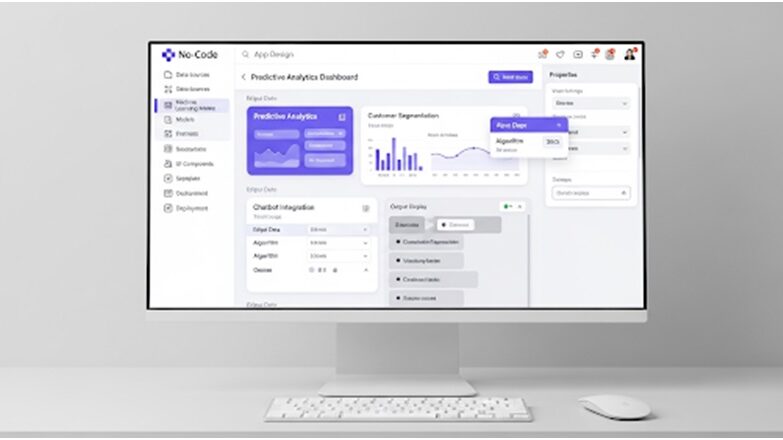The Importance of First Impressions
Creating a connection from the get-go can significantly impact how your message is received. A well-crafted introduction email goes a long way in establishing how you’re perceived. Here’s why it matters:
- Building Credibility: A professional email demonstrates that you take your work seriously and builds trust with whoever is on the receiving end.
- Standing Out: Everyone’s dealing with crowded inboxes. Make your email the one that gets opened and read.
- Getting Results: If your purpose is unclear, the recipient won’t know what to do next. Clear, focused emails with a call to action lead to better outcomes.
Here’s what sets a professional email apart:
- Value First: Quickly articulate your value proposition. Show how your product or service can solve a problem or enhance their business right in the opening line.
- Credibility Matters: Include success stories or link to case studies. Let your track record speak for itself and build trust from the outset.
- Clear Next Steps: End with a clear call to action. Whether it’s a follow-up email, a brief call, or a visit to your landing page, make it easy for them to take the next step.
Read our blog post on How to write a follow up email
How to Offer Services via Email
Email is a powerful tool in your sales arsenal, but like any tool, it’s all about how you use it. Offering your services via email requires a mix of tact, personalization, and timing. Let’s dive into how to compose and write an email to tailor your offers for maximum impact.
Step-by-Step Guide to Composing Your Offer and Email
Step-by-Step Guide to Composing Your Offer and Email
Crafting an email that effectively offers your services isn’t just about blasting your sales pitch across the digital universe. It’s about crafting your proposal emails with a message that resonates. Here’s how:
- Start with a Strong Subject Line: Your email subject line should be compelling and clear, making the recipient want to open your email. Think of it as your first sales pitch. Use keywords like “sales email” and “compelling subject line” to catch their attention.
- Personalize the Opening: Address the recipient by name and reference their company or any mutual connection. This shows you’ve taken the time to tailor your message, making a potential client feel valued from the outset.
- Articulate Your Value Proposition: In a few concise sentences, explain how your service can solve a problem or enhance their business. Highlight key elements that distinguish you from competitors. Use terms like “value proposition” and “pain points” to speak directly to their needs.
- Showcase Success Stories: Include brief examples or case studies that demonstrate your track record. This could be as simple as linking to a blog post or a landing page with more details. Success stories build credibility and trust.
- Clear Call to Action: End with a clear next step, whether it’s scheduling a quick call, a follow-up email, or an invitation to view your product or service in action. Make it easy for them to engage further with you.
- Professional Tone Throughout: Maintain a professional yet approachable tone. Use “professional tone” and “email templates” to ensure your message is both persuasive and polite.
Tailoring Your Message for Different Audiences
Understanding the importance of tailoring your email communication cannot be overstated.
It’s about recognizing that a one-size-fits-all approach doesn’t work in the diverse landscape of potential clients.
Tailoring matters because it allows you to speak directly to the unique needs, challenges, and interests of each segment of your audience, significantly increasing the likelihood of engagement and positive response.
Why Tailoring Matters
Tailoring your sales emails is crucial for your sales prospecting several reasons:
- Increases Relevance: Customized messages resonate more deeply with recipients by addressing their specific situation or pain points.
- Boosts Engagement: Tailored emails show that you understand the recipient, making them more likely to read through your message and take action.
- Enhances Relationship Building: Personalization helps in building relationships with potential clients by showing genuine interest and effort in addressing their needs.
Criteria for Tailoring Your Message
Before you start tailoring your emails, identify the criteria that will most effectively segment your audience. These can include:
- Industry or Sector: Different industries face unique challenges and opportunities.
- Job Title: The concerns of a CEO differ from those of a Marketing Manager or IT Specialist.
- Previous Interactions: The stage of engagement (new prospect, warm lead, long-term client) can dictate the tone and content of your message.
- Geographic Location: Cultural nuances and regional issues can influence how your message is received.
- Behavioral Data: Engagement with past emails, downloads, or visits to your website can offer insights into what interests your audience.
Step-by-Step Guide to Tailoring Your Message
Once you’ve identified the criteria for segmentation, follow these steps to tailor your message effectively:
Gather Insights: Use data from your CRM, email marketing software, or direct feedback to understand the characteristics and preferences of each segment.
Segment Your Audience: Divide your potential clients into segments based on the identified criteria. This could mean creating lists for different industries, job titles, or engagement levels.
Develop Tailored Content: For each segment, craft a message that addresses their specific interests and needs. Adjust your value proposition to highlight how your service or product solves their unique problems.
Customize the Subject Line: Develop different subject lines for each segment that speak directly to what matters most to them. A compelling subject line can dramatically increase your open rates.
Choose the Right Email Template: Select an email template that suits the tone and style preferred by each segment. Customize these cold email templates further with specific details related to the segment.
Adjust Your Tone: Match the recipient’s communication style. Mirror the level of formality (or informality) they use in their own content and interactions
Personalize the Opening: This is where your research pays off. Mention a shared connection, a relevant piece of content they created, industry news about their company, or something you genuinely admire about their work.
Tailoring Based on Geography, Role, or Position
Location offers valuable hints about market trends, regulations, and even cultural nuances:
- Local vs. Global: Is this a small local business or an international company? Adjust your examples and case studies accordingly.
- Regional Differences: Even within a country, there may be regional variations in business practices or preferred communication styles.
- Cultural Sensitivity: Be mindful of potential differences in formal vs. informal language and references that might not resonate across cultures.
Personalize the Call to Action: Tailor your call to action based on the desired next step for each segment. This could vary from scheduling a quick call with new business prospects to inviting long-term clients to a VIP webinar.
Test and Refine: Use A/B testing to compare different approaches within the same segment. Monitor metrics like open rates, click-through rates, and conversion rates to identify what works best, then refine your approach accordingly.
Follow Up Thoughtfully: Tailor your follow-up emails based on the recipient’s response (or lack thereof) to your initial message. This shows attentiveness to the recipient to achieve their engagement level and can help move the conversation forward.
Read our blog post on How to write a professional email offering services
Capturing Attention with Subject Lines That Get Opened
The subject line of your email is your first (and sometimes only) chance to make a direct appeal to your potential client’s curiosity and interests.
Crafting a subject line that gets opened isn’t just an art; it’s a science that blends creativity with strategic thinking.
8 Characteristics of a Great Subject Line
Great subject lines share common traits that make them irresistible. Here are eight characteristics to consider when drafting yours:
- Clarity: Be clear about the content of your email. Users should have a good idea of what to expect once they open it.
- Brevity: With mobile devices dominating email access, keeping subject lines short ensures they are fully visible on any screen.
- Personalization: Including the recipient’s name or company name can increase open rates. It shows that the email isn’t just another mass sales email.
- Urgency: Creating a sense of urgency encourages recipients to act now rather than later. But use sparingly to avoid sounding spammy.
- Curiosity: Leave enough unsaid to make recipients want more. A well-crafted subject line teases the content without giving all the details away.
- Relevance: Tailor the subject line to your recipient’s industry, job role, or recent interactions with your brand to boost relevance.
- Benefit-driven: Highlight a clear benefit. Whether it’s solving a pain point or offering valuable insights, make it about what’s in it for them.
- Specificity: Be specific to avoid being vague. Specific details can make your subject line stand out in a crowded inbox.
The “Pain-Solution-Quantify (PSQ)” Framework
The “Pain-Solution-Quantify (PSQ)” framework is designed to optimize email subject lines by directly addressing the recipient’s pain point, offering a clear solution, and including a quantifiable benefit or outcome. This approach aims to capture the recipient’s attention by highlighting immediate value and relevance.
Implementing the PSQ Framework
- Identify the Pain Point: Clearly define a common problem your target audience faces. This requires understanding your audience deeply through research, feedback, and interaction.
- Offer a Solution: Directly link your product or service as the solution to the identified pain point. Make sure the solution is perceived as effective and attainable.
- Quantify the Outcome: Include a number to represent the benefit, such as time saved, percentage increase in efficiency, or any other measurable outcome. This quantification helps set realistic expectations and sparks curiosity.
Crafting a PSQ Subject Line
- Start with the pain point to immediately resonate with the reader’s current challenges.
- Introduce the solution your email will delve into, ensuring it’s clearly linked to addressing the pain point.
- Include a number that quantifies the benefit, making the promise tangible and compelling.
Example: “Reduce Email Overload by 30% with XYZ Tool”
Common Pain Points and Solutions
Below are common pain points for various industries and how companies might address them in their outreach emails using the PSQ framework:
Marketing Agency:
- Pain Point: Struggling to increase client engagement.
- Solution: Tailored marketing strategies.
- PSQ Example: “Boost Client Engagement by 40% with Custom Marketing Plans”
SaaS CRM Startup:
- Pain Point: Managing customer relationships efficiently.
- Solution: Automated CRM tools.
- PSQ Example: “Streamline Customer Management by 50% with Our CRM Suite”
E-commerce Platform:
- Pain Point: Increasing online sales.
- Solution: Optimized checkout process.
- PSQ Example: “Lift Online Sales by 30% with Our Streamlined Checkout”
Cybersecurity Firm:
- Pain Point: Protecting against data breaches.
- Solution: Advanced security protocols.
- PSQ Example: “Reduce Breach Risks by 70% with Next-Gen Security”
Remote Work Solutions Provider:
- Pain Point: Enhancing team collaboration remotely.
- Solution: Integrated collaboration tools.
- PSQ Example: “Improve Remote Team Collaboration by 60% with Our Tools”
Healthcare Tech Company:
- Pain Point: Streamlining patient records management.
- Solution: Cloud-based patient management system.
- PSQ Example: “Simplify Patient Records Management by 50% with Cloud Solutions”
Educational Tech Startup:
- Pain Point: Engaging students in online learning.
- Solution: Interactive learning platforms.
- PSQ Example: “Increase Student Engagement by 45% with Interactive Learning”
Financial Services Software:
- Pain Point: Simplifying financial reporting.
- Solution: Automated reporting tools.
- PSQ Example: “Cut Financial Reporting Time by 40% with Automated Tools”
HR Tech Company:
- Pain Point: Streamlining the hiring process.
- Solution: AI-driven recruitment software.
- PSQ Example: “Speed Up Hiring by 30% with AI Recruitment”
Productivity Tools Developer:
- Pain Point: Improving time management.
- Solution: Time-tracking software.
- PSQ Example: “Boost Productivity by 25% with Time-Tracking Insights”
32 Subject Line Examples for Immediate Impact
Crafting the perfect subject line for your sales email, cold email, or introduction email can drastically improve your email marketing campaigns. Here are 32 examples designed to make an immediate impact:
Personalization and Direct Appeal
- “[First Name], Boost Your Team’s Productivity Today!”
- “Exclusive Offer for [Company Name] Inside!”
- “[First Name], You’re Missing Out on [Benefit]!”
- “Open for a Special Offer Just for [Company Name]”
- “Thank You, [First Name]! A Special Gift Inside”
- “[First Name], Take the First Step to [Solution]”
Urgency and Time-Sensitivity
- “Last Chance: Secure Your Spot Now!”
- “🚀 Boost [Target Market] Engagement Instantly!”
- “[Urgent/Important] Update for [Target Audience]”
Solutions and Benefits
- “End [Pain Point] with This Quick Solution”
- “Solve [Pain Point] in Just 10 Minutes a Day”
- “[First Name], [Product/Service] Can Save You 10 Hours Weekly!”
- “Your Custom [Product/Service] Plan Awaits”
- “Unlock 20% More Efficiency with [Product/Service Name]”
Success Stories and Credibility
- “How [Company Name] Achieved [Specific Result]”
- “See How [Similar Company] Overcame [Challenge]”
- “[Company Name]’s Secret to [Benefit]”
Curiosity and Engagement
- “Why [Industry Leader] Swears by [Product/Service Name]”
- “Exclusive: [New Product/Feature] Preview!”
- “Your Blueprint for [Outcome] Is Inside”
Action-Oriented and Invitations
- “Can We Help You Reach [Specific Goal]?”
- “Next Steps for [Company Name] to Achieve [Goal]”
- “Unlocking Potential: The Key to [Desired Outcome]”
- “Welcome to Better [Outcome]: Start Today”
Educational and Value-Add
- “Your Guide to Doubling Sales Leads”
- “Exclusive Insights for [Industry] Pros”
- “Is [Pain Point] Slowing You Down?”
- “Your [Industry] Update: Trends You Can’t Ignore”
- “How to Transform Your [Specific Process] Today”
Custom Offers and Updates
- “You Asked, We Delivered: [Solution/Feature]”
- “Open for a Special Offer Just for [Company Name]”
- “[First Name], Avoid These Common [Industry] Mistakes”
For further reading and to dive deeper into crafting compelling subject lines for your email marketing strategies, consider exploring the following resources:
These articles provide additional insights and examples that can help you refine your approach to email subject lines, enhancing the effectiveness of your follow-up and cold email campaigns.
Read our blog post on Email Warmer
Nail Your Intro: Essential Tactics to Impress Potential Clients
Crafting the perfect introduction in your sales email is more than just a courtesy; it’s your first opportunity to make a significant impression on potential clients. The “Pain Agitate Solution” (PAS) formula is a tried-and-true method that can help you craft compelling intros that grab attention and set the stage for a successful sales email.
The Pain Agitate Solution to Crafting the Perfect Intro
- Identify the Recipient’s Pain Points: Start by addressing the specific challenges or needs your potential client faces. This requires thorough research and understanding of your recipient’s industry, business, and role. Highlighting these pain points in your sales emails shows that you’re not just reaching out randomly but with a purpose.
- Agitate the Pain: Once the pain is identified, amplify it. This doesn’t mean being negative but rather illustrating the consequences of not addressing the issue. This step involves empathizing with your potential customers, showing you understand the severity of their challenges and how it impacts their business.
- Offer a Solution: After amplifying the pain, introduce your product or service as the solution. Explain how your offering can alleviate their pain points and bring value to their business. This should be done succinctly in your email templates, ensuring the message is clear and direct.
| Pain Point Experienced by Reader | Example Intro |
| Struggling to maximize the effectiveness of a marketing funnel despite having the latest tools and being a well-known brand. | Dear {{First_name}}, Imagine being one of the most well-known brands, with all the latest tools at your disposal—yet your marketing funnel remains a maze of untapped potential. |
| Overlooking the potential of customer data and marketing technology. | Dear {{First_name}}, Are you sitting on a hidden jewel without realizing its full potential? Many businesses unknowingly do just that—overlooking the untapped potential of their customer data and marketing technology. |
| Hard work and a talented team not translating to revenue success due to lack of little expert tricks. | Dear {{First_name}}, A talented team and lots of hard work don’t directly translate to revenue success. It’s not about your team’s knowledge or the complexity of the task. It’s about little expert tricks that come with experience across various domains. |
| Constantly needing to adapt to the fast-evolving digital marketing landscape. | Dear {{First_name}}, The digital marketing world never lets you take a breath. Just when you mastered SEO, paid campaigns emerged. Mastered those, and then came Facebook, then Instagram. As you got the hang of it all, COVID-19 reshaped the digital landscape. |
| Tech product not receiving the attention it deserves. | Dear {{First_Name}}, Does your tech product deserve more attention than it’s currently getting? |
| Challenges in positioning a FinTech brand as a thought leader. | Dear {{First_Name}}, Facing challenges in positioning your FinTech brand as a thought leader? It’s like achieving weight loss – everyone wants it, but very few get it. |
| Marketing efforts feeling outdated in a rapidly evolving tech landscape. | Dear {{First_Name}}, Does your company’s marketing feel stuck in slow motion in a world where technology evolves at lightning speed? A leading tech firm in California, known for innovation, found its marketing materials fading into the background amidst fierce global competition. They needed a major overhaul, not just a minor update. |
Tips on Writing Your Value Proposition: Make it Count!
Creating a compelling value proposition in your sales email can dramatically increase your chances of catching the attention of prospective clients. Here are some tips to ensure your value proposition stands out, leveraging the power of email templates and personalized content to make every word count.
1. Be Clear and Concise
Your sales email should immediately convey what makes your offer unique. Use a clear and compelling opening line in your email template that articulates your value proposition without overwhelming the reader. Think of your opening paragraph as the hook that draws the recipient in, urging them to read further.
2. Highlight Benefits, Not Features
Focus on how your product or service benefits the recipient. Sales emails often make the mistake of listing features rather than explaining how these features solve a problem. Your value proposition should articulate the benefits that directly address the recipient’s pain points, aiming to achieve a specific outcome they desire.
3. Use Relevant Content and Examples
Incorporate email examples that demonstrate how your product or service has helped other satisfied clients. These stories or case studies make your value proposition more relatable and credible, boosting your cold email’s click-through rate beyond the industry average.
4. Customize for Your Audience
Personalized emails have a higher success rate. Use the recipient’s name, reference their business or industry, and tailor the content to fit their buyer persona. This customization shows that you’ve done your homework and are not just sending generic sales emails.
| Bad Example | Good Example |
| Our product has the latest features, including A, B, and C. | With features A, B, and C, you can solve [specific problem], saving you time and money. |
| Check out our website for more information on our products. | See how our product helped [Company Name] achieve [specific result]. Let’s discuss how we can do the same for you. |
| Dear Customer, you need our product. | Dear [First_Name], given your role in [Industry/Company], our solution can help streamline your [specific process], just as it did for [similar company or industry reference]. |
| We offer the best product on the market. | Our clients, like [Client Name], have seen [specific benefit] by using our product. Let’s explore how it can be tailored to your needs. |
How to Build Instant Trust with Social Proof: Step by Step Guide
Building trust with your prospective clients through a sales email can be challenging, given the virtual nature of the communication. However, incorporating social proof into your sales emails and email templates can significantly enhance credibility and foster trust. Here’s a step-by-step guide to integrating social proof into your email strategy effectively.
1. Identify Relevant Social Proof
Start by gathering social proof that resonates with your target audience. This could include testimonials from satisfied clients, case study highlights, or data points showcasing success stories. Ensure the social proof is relevant to your prospective clients’ industry or challenges to maximize impact.
2. Leverage Industry Recognition:
Highlight awards, certifications, or positive media mentions. These build trust with your target audience. If space allows, include logos or badges as visual social proof.
3. Personalize the Social Proof
While templates save time, personalization is key to making each cold email feel unique and targeted. Customize the email template by selecting social proof that specifically addresses the pain points or goals of the recipient. Tailoring the message shows that you understand their needs, increasing the email’s relevance and effectiveness.
4. Measure and Adapt
Finally, monitor the performance of your sales emails. Pay attention to metrics like the click-through rate and open rate to gauge the effectiveness of the social proof used. Don’t hesitate to test different types of social proof or its placement within the email to find what resonates best with your audience.
Note – Highlighting Social Proof While Cold Emailing
Cold emails benefit significantly from social proof because they help overcome the initial skepticism. Mention how your product or service helped a similar company achieve or exceed industry averages, or include a powerful quote from a well-known client. This can improve the click-through rate and overall response to your cold email campaign.
Simple Tactics to Close More Deals with a Compelling Call to Action
Crafting an effective Call to Action (CTA) in your emails is crucial for converting prospects into customers. Here’s how to make your CTAs compelling and straightforward:
Good Call to Action Should Have Clarity and Directness
- Specify the desired action. Make it crystal clear what you expect the recipient to do next, whether it’s to sign up, download, or schedule something.
- Employ actionable language. Use verbs that prompt immediate action, like “Register,” “Discover,” or “Join.”
Good Call to Action Should Do the Following:
- Be visually prominent. In cold emails and sales prospecting efforts, a CTA that stands out through color or design can grab attention.
- Incorporate urgency. Phrases like “Limited time offer” or “While supplies last” compel quick responses.
A Good Call to Action Includes:
- Testing variations. Use A/B testing in your email examples to identify which CTAs garner better responses, considering different phrasings and placements.
- Adapt the CTA to the recipient’s specific interests or requirements to increase relevance and effectiveness.
- Clear benefits. Ensure the recipient understands what they will gain by following the CTA, whether it’s accessing valuable information or taking advantage of an offer.
Tailoring CTAs According to the Sales Process Stages:
A well-crafted CTA reflects the specific stage of the sales process, adjusting its message to meet the prospects where they are. For example:
- Early Engagement. In the initial introduction or introductory email, use a CTA that encourages a simple engagement, such as learning more about a topic or scheduling an introductory call.
- Middle of the Funnel. During the consideration phase, CTAs in proposal emails should focus on deepening the relationship, like inviting the prospect to a detailed product demo or a personalized consultation.
- Closing Stage. As prospects near the decision point, your CTA should prompt them to take the final step, such as signing up for a trial or finalizing a purchase agreement.
Leveraging Resources:
- Utilize Free Templates and Email Examples. Start with free templates and proven email examples to craft your CTAs. These can serve as inspiration and provide a foundation for what works well. For instance, explore this resource for crafting effective B2B cold emails: Cold Email Template: B2B Book More Meetings in 2024.
The Art of the Follow-Up Email
1. The Perfect Timing
Finding the sweet spot for follow-up timing is essential. Too soon, and you seem overly pushy. Too late, and the prospect may have forgotten about you or moved on. Here’s a breakdown to help you find that balance:
- The First Follow-Up: If you haven’t received a response within 3-5 business days of your initial outreach, it’s time for your first follow-up. This gives the recipient enough time to have potentially read your message without making you seem desperate.
- Subsequent Follow-Ups: If you still don’t hear back, space out follow-ups with increasing intervals. A good rule of thumb is to double the waiting time between each attempt (e.g., 3 days, then 6 days, then 12 days, etc.).
- Knowing When to Quit: While persistence is key, there’s a fine line between that and becoming a nuisance. Typically, if there’s no response after 4-5 well-spaced follow-up attempts, consider pausing your outreach to that specific prospect.
Factors That Influence Timing
- Industry Norms: In fast-paced sectors, a shorter follow-up window might be appropriate. Research what’s typical within your target market.
- Urgency: If your initial email conveyed a time-sensitive offer or opportunity, follow up sooner rather than later.
- The “Temperature” of the Lead: If you had a positive interaction (e.g., at a networking event), a quicker follow-up may be warranted.
Pro Tip: Use email automation tools to schedule follow-ups easily. However, always personalize each email to avoid sounding robotic.
2. Add Value in Each Follow-Up
Think of your follow-up emails as mini opportunities to demonstrate your expertise and build a genuine relationship with the potential client. Instead of simply asking, “Did you get my previous email?”, transform each follow-up into a touchpoint that delivers something of worth to the recipient. Here’s how:
- Share Relevant Resources: Did you recently publish a blog post addressing a common pain point in the prospect’s industry? Did you come across a third-party article they might find insightful? Include a link in your follow-up, providing a brief explanation of why they might find it useful.
- Offer Quick Tips: Have a short, actionable tip related to their potential needs? Share it! This could be a time-saving technique, an industry best practice, or a piece of advice that aligns with your services.
- Showcase a Mini Case Study: If you have a brief success story (ideally from their industry) demonstrating a result you’ve achieved for a client, present it within the follow-up email. Keep it concise – a few sentences highlighting the problem, your solution, and the positive outcome are often enough to pique interest.
- Ask Thought-Provoking Questions: Instead of a generic follow-up, ask an open-ended question relevant to their business or current challenges. Show you’re interested in understanding their needs better, not just closing a deal.
Example: Follow-up Email Snippet
Let’s say your services help e-commerce businesses optimize their shipping processes. A follow-up could look like this:
Subject: Quick tip for reducing shipping costs
Hi [Prospect’s Name],
Hope you’re doing well. I wanted to share a quick tip that’s helped several of our e-commerce clients reduce their shipping expenses. [Insert 1-2 sentences about the tip].
Would you be interested in hopping on a brief call to discuss ways to potentially streamline your shipping operations?
Best regards, [Your Name]
Key Points:
- Don’t Be Pushy: Focus on value first, the sales pitch comes later.
- Personalize When Possible: Can you tie the value-add to a specific point from your prior conversation? Even better!
- Keep it Brief: Long, dense follow-ups are less likely to be read.
3. Variety in Your Approach
Sometimes, breaking out of the inbox is the key to getting a response. Here’s how to strategically incorporate other channels:
When to Switch Channels
- After Multiple Unanswered Emails: If 3-4 well-crafted follow-up emails have gone ignored, it’s a sign your prospect might prefer a different communication style or simply be overwhelmed by their inbox.
- High-Value Leads: When a lead has significant potential, going the extra mile with a different approach demonstrates your genuine interest.
- Signs of Engagement: If the prospect opened your emails but never replied, a brief call can feel less intrusive than another email follow-up.
Options for Diversification
- The Brief Phone Call:
- Keep it short (under 5 minutes) and reference your previous emails.
- Focus on providing value (quick tip, relevant resource) rather than being pushy.
- Aim to leave a voicemail if they don’t pick up, paving the way for a future attempt.
- LinkedIn Outreach:
- Send a personalized connection request mentioning your previous emails and expressing interest in their work.
- If they connect, a well-crafted LinkedIn message can be a good way to reignite the conversation.
Leveraging a Multi-Touch Strategy
A multi-touch approach means engaging prospects across multiple channels over time. This increases your visibility, and demonstrates persistence without feeling spammy. Here’s a simple example:
- Touch 1: Initial email
- Touch 2: First follow-up email
- Touch 3: Brief phone call attempt with voicemail
- Touch 4: Second follow-up email
- Touch 5: LinkedIn connection request
Important Considerations
- Adapt to the Lead: If you notice your prospect is highly active on LinkedIn, prioritize that channel.
- Track Your Results: Monitor which channels and combinations yield the best response rates so you can refine your strategy over time.
Ready-to-Use: 8 Proven Email Templates for Every Scenario
Boost Engagement and Keep Conversations Going with Follow-Up Templates
Dear [Recipient’s Name],
Reflect on our previous conversation about enhancing your [specific aspect] with [Your Service].
Imagine the heights your business could reach with our tailored solutions.
Are you ready to take the leap towards exceptional growth and efficiency?
How about a quick 15 mins call to thrash the details out?
Eager to see you excel,
[Your Name]
[Your Position]
[Your Company]
Showcase Success: Using Case Studies to Build Credibility and Close Deals
Dear [Recipient’s Name],
Curious about real-world results with [Your Service]?
[Client Name] was in your shoes, battling [Challenge].
With our strategic approach, they saw [Impressive Outcome], elevating their [specific aspect].
Let’s discuss how this blueprint can be replicated for you.
To your success,
[Your Name]
Your Sales Toolkit: Essential Sales Email Templates for Every Stage
Dear [Recipient’s Name],
Embark on a journey to redefine your [specific field] with [Your Service].
Let’s unlock potential you didn’t know existed.
Explore Possibilities: Ready for a transformation?
Initiate change,
[Your Name]
Dear [Recipient’s Name],
You’ve glimpsed what’s possible.
Dive deeper to uncover how [Your Service] aligns perfectly with your goals, offering unparalleled solutions to your [specific challenges].
Let’s analyze your needs together.
Towards a better future,
[Your Name]
Dear [Recipient’s Name],
The decision is crucial, and [Your Service] is your gateway to [specific benefit].
Confirm your commitment to excellence and let’s make impactful changes together.
Secure your transformative journey.
Elevating [industry/field],
[Your Name]
Overcome Objections with Client Success Story Templates
Dear [Recipient’s Name],
Like [Client Name] who overcame [Pain Point] and achieved [Result] with [Your Service], your story awaits.
Their triumph can be yours.
Let’s replicate success tailored to your unique challenges.
Let’s connect.
Crafting futures,
[Your Name]
The Pain Point Solution Pitch: Sales Email Templates
Dear [Recipient’s Name],
Facing [Pain Point] can be daunting.
With [Your Service], similar hurdles have transformed into stepping stones for our clients, leading to [Specific Results].
Your pathway to overcoming [Pain Point] begins here.
Resolve Now: Ready to conquer?
Transforming challenges,
[Your Name]
Reactivate Past Clients with ‘We Miss You’ Email Templates
Dear [Recipient’s Name],
It’s been a while since we last connected.
[Your Service] has evolved, unveiling solutions that resonate with your journey towards [specific goal].
Let’s reignite our partnership and explore new horizons together.
Reconnect: Miss us too?
Let’s catch up.
Awaiting your return,
[Your Name]
Final Thoughts: Polishing and Sending Your Email
1. Proofreading: The Non-Negotiable Step
Nothing erodes your credibility faster than a follow-up email riddled with typos or grammatical errors. Take the time to meticulously proofread your work. Read your email out loud to catch awkward phrasing that your eye might skip over. While tools like Grammarly can be helpful, don’t rely on them solely. Remember, you want to demonstrate care and attention to detail – those qualities translate into how you’re perceived as a potential business partner.
2. Best Times to Send Emails for High Open Rates
While there’s no foolproof “best time” guaranteed to land your email at the top of everyone’s inbox, there are general trends worth considering.
- Research suggests that Tuesdays, Wednesdays, and Thursdays often see higher open rates across various industries.
- Mornings (around 10AM) and early afternoons (around 2PM) in the recipient’s time zone also tend to be good bets.
- Experiment to find what works best for your target audience, and always keep time zone differences in mind.
3. Timing and Tactics for Follow-Up
We’ve already covered the importance of follow-up timing, but it’s worth reiterating here. A well-timed follow-up, coupled with a polished and personalized email, reinforces your dedication. Consider using tools that track email opens. They provide valuable clues about your audience’s inbox habits, letting you optimize your send times further.
Additional Tips
- A/B Test Your Subject Lines: Try sending slight variations of your follow-up subject line to see which gets the most opens. This data-driven approach helps hone your strategy.
- Don’t Forget the Human Touch: Persistence is key, but don’t let it override warmth and empathy in your communication. A friendly, helpful tone goes a long way in building relationships.
Read our blog post on KIndly Regards
Additional Templates
Template 1: Introduction email
Subject line: Introducing [Company Name] – A full-service marketing agency
Dear [Name],
I hope this email finds you well.
My name is [Your Name] and I am the owner of [Company Name], a full-service marketing agency that specializes in helping small businesses grow their online presence.
I came across your company’s website and was impressed by the products and services you offer.
I believe that our marketing expertise could help you reach a wider audience and drive more sales.
Our services include [list services], and we have a track record of success with clients in [industry].
I’d love the opportunity to discuss how we can help your business achieve its goals.
Could we schedule a call to discuss this further?
Best regards,
[Your Name]
Template 2: Collaboration email
Subject line: Partnership opportunity with [Company Name]
Hi [Name],
I’m reaching out to see if you’d be interested in collaborating with [Company Name] on a project.
We specialize in [list services] and have worked with clients in [industry]. We believe that our skills and expertise could be a valuable addition to your team.
I’d love the opportunity to discuss the details of the project further and see how we can work together to achieve success.
Could we schedule a call to discuss this further?
Best regards,
[Your Name]
Template 3: The Referral Template
This template is useful for offering your services to someone who has been referred to you by a mutual connection.
Subject Line: Referral from [Name]
Hi [Name],
I hope this email finds you well.
[Name] mentioned that you might be interested in [what your company does].
We specialize in [specific area of expertise] and have helped many businesses [achieve specific results].
I’d love to set up a call to discuss how we can help your business [achieve specific goals].
Do you have any availability in the next few days?
Best regards,
[Your name]
Template 4: The Follow-Up Template
This template is useful for following up with a potential client or business partner after an initial introduction or meeting.
Subject Line: Follow-Up from [Name]
Hi [Name],
I hope this email finds you well.
I just wanted to follow up on our [initial meeting/introduction].
As a reminder, [Name of your company] specializes in [what your company does] and we have a lot of experience in [specific area of expertise].
I’m confident we can help your business [achieve specific goals] and I’d love to set up a call to discuss this further.
Do you have any availability in the next few days?
Best regards,
[Your name]
Template 5: The Cold Email Template:
This template is useful for reaching out to potential clients or business partners without a prior introduction or referral.
Subject Line: [Specific problem your service solves]
Hi [Name],
I hope this email finds you well.
I came across your business while searching for [specific problem your service solves] and I think we might be able to help.
[Name of your company] specializes in [what your company does] and we have helped many businesses [achieve specific results].
I’m confident we can help your business [achieve specific goals] as well.
I’d love to set up a call to discuss this further.
Do you have any availability in the next few days?
Best regards,
[Your name]











